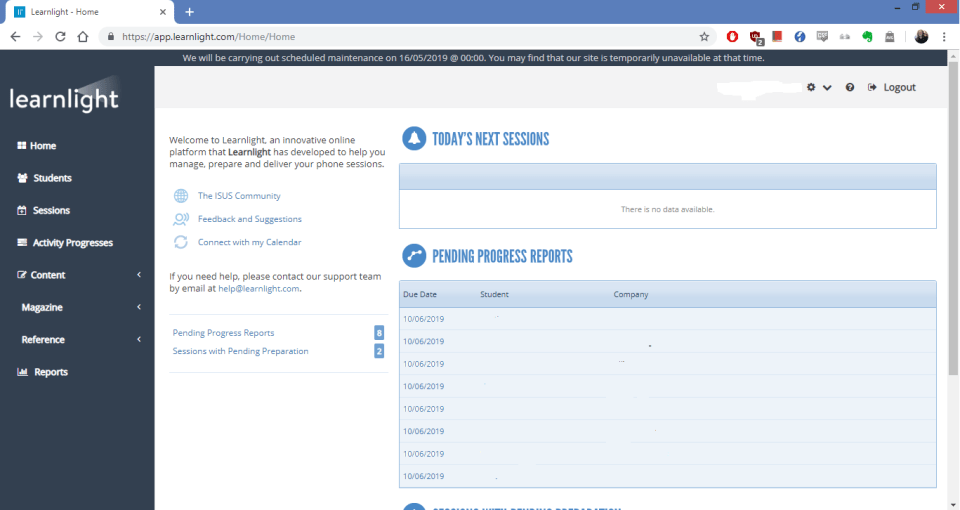Orientation with Learnlight/CETS Training (What to expect)
Back in August, I knew I would have two weeks of training once I arrived in Spain. I knew we would be learning teaching techniques and reviewing grammar. Apart from that, I had no idea what to expect.
Part of our predeparture preparation involved reviewing grammar. This was an online platform on canvas where we would watch modules and answer a few questions. This did help, but also do not feel bad if you review online and don’t pass the grammar test on the first try. It is difficult and it has likely been years since your last grammar class, so it might take a few tries for it to set in.
The company you will work for, Learnlight, has an office located near the Quevedo metro stop on line two. It is likely your temporary housing will be near there, since you will go there everyday for a while. The format of the CETS training comes in two parts: lessons in the mornings and practice classes in the afternoons. On the first day, you will be given a course book that covers the actives for each day’s lessons. You will have to wear professional clothing to class. The sessions go from about 9 am to 7 pm, however you may be able to leave earlier depending on your practice sessions.

One of the main focuses will be Learnlight’s online platform. The platform is what we use to assign homework and lesson plan for our classes. There is the class prep work that the students do before class and then there is the ‘live session’ which is completed in class. Since the prep work takes some time, it is important that you assign your lessons as soon as possible, never less than two business days before the class. There is also a ‘magazine section’ which provides interesting articles based on what English level your students are at. You can also arrange to teach a ‘mashup’ which allows you to assign a class using a URL, like a news article or an ESL lesson plan found online. Most of my classes are on 50% learning path, so I will usually assign a live session one class then a ‘mashup’ or magazine article another class.
The morning sessions can be difficult while you are still jetlagged, so be sure to take advantage of the coffee maker in the kitchen! The morning sessions will cover grammar of course. Additionally, you will learn about techniques related to business English such as error correction, needs analysis, class structure, different activities, and how to teach learners of different levels. The classes will be interactive as well, often you will be asked questions or asked to demonstrate a certain method. You might be asked how you would deal with a certain problem, like a student who doesn’t like to be error corrected. You will learn to use tools such as listening exercises, roleplays, and debates. You will also become familiar with Learnlight’s methodology of blended learning.
Once the morning session is complete, it will be time to put what you learned into practice. Depending on the size of your group, it is likely you will have one to two practice lessons a day. There are four different kinds of practice classes: pre intermediate, intermediate, upper intermediate, and a one on one. You will have time to lesson plan before lunch and have an instructor look over you plan. During these sessions you will be observed for about half a class or so by an instructor who will provide feedback at the end of the day. Once you have had practice, you will be assigned some sessions where you need to teach grammar, you will be observed for the entire session this time.
As far as after class, you don’t usually get homework unless there is a concept you didn’t have time to cover in class. This is you time to relax, whether it be grabbing some tapas or getting an early night’s sleep. You could also hunt for apartments during this time if you have the energy, but don’t feel guilty if all you want to do is be lazy after a long day.
The orientation is tiring, but it is the best form of practice. You may have long days traveling on the metro and the training helps you prepare to overcome that tiredness and teach engaging classes. You get a lot of practice teaching a diverse class that will help you prepare for when you are teaching classes of all levels. We all make mistakes teaching and the training provides a way to learn from those mistakes before you teach a professional class.
Related Posts
TWICE with CIEE: Kayleigh in Spain (PART 2)
Kayleigh is a CIEE alum who participated in CIEE's Teach in South Korea program AND CIEE’s Teach in Spain Volunteer program! CLICK HERE to read her experience in Korea. WHY... keep reading
CIEE Volunteer Spotlight: Meet Layla!
Where are you from? What was your academic background or career before teaching abroad? I am Canadian, specifically Québécoise. In Quebec, students are required to attend community college (CEGEP) before... keep reading




